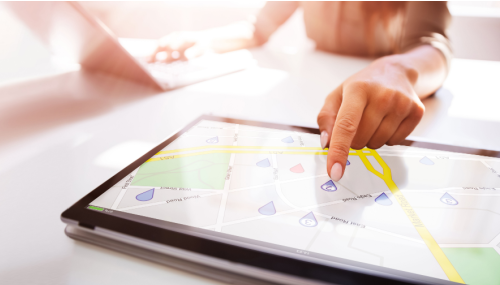10+ Local SEO Trends You Shouldn’t Overlook in 2023—Part 1
Maybe it was the pandemic. Maybe it was the “shop local” movement. Maybe it was the rapid proliferation of smartphones and searches conducted on...

In marketing circles before digital marketing emerged, marketing pros often lamented that they couldn’t measure their marketing results accurately. And CEOs, CFOs and business owners would push back and say: “Why not?” Business leaders obviously wanted to know if their marketing efforts were making a difference. Unfortunately, in many cases, marketers simply couldn’t give them that information.
Fast forward to the era of digital marketing and today’s digital marketing leaders have access to accurate, real-time, and relevant information they can use to readily determine if their digital marketing efforts—for our purposes here, their organic search efforts—are working.
There’s an old saying that goes something like this: “If you want something to improve, the first step is to measure it.” That’s certainly true when we’re talking about improving local organic search results. Here we take a look at the steps to take to not only measure, but to vastly improve, your organic marketing effectiveness.
What are the words and phrases that people are using to search for what you have to offer? We recommend coming up with 20-30 as a starting point. It’s also important to use variations for each keyword to address different ways that people search. So, for example, someone searching for “air conditioning repair,” might also search for terms like “AC repair,” or “heat pump repair,” etc. People typically also use three different ways to search: just the term itself (“AC repair), a “near me” modifier (“AC repair near me”), or a geographic modifier (“AC repair Indianapolis”). All of these variations will produce different result sets and need to be factored into your analysis.
You can do this by brainstorming and coming up with terms on your own. Or, there are some useful tools out there like Google’s keyword planning tool available under AdWords. It’s designed for paid search but can be used for organic planning. You can also get an idea, on a national level, of how many searches are being done for each of these keywords.
Again, there are tools out there that can help you do this. SEMRush is one example. You can also do this manually through a browser. What you’ll want to make sure you’re doing, though, is doing this analysis based on your local market area which may be your city, your county, or a grouping of local municipalities. So, you’ll tell Google that you’re searching from Indianapolis and then conduct the search. Here are some good ways to adjust your location parameters so you can do this type of research when you’re not located in the area you’re interested in.
Simply focus on the first page of search results and determine what position you’re in.
What we then do with this data, to establish a baseline, is create a spreadsheet with the search terms in rows and the local sites or locations you want to optimize for across the top in columns.
This is your starting point, or baseline.
(NOTE: This step can take some time. We can do the work for you using some of the tools we’ve developed. We’ll happily run a marketing performance assessment, at no cost, for anybody that needs it because we have the tech and the automation.)
For each of the terms you’ve identified, you’ll want to determine where you would like to rank.
Here’s an idea of the value that can come from moving up in these rankings based on our data.
And the numbers continue to drop off from there.
The click through rate (CTR) for search engine results pages (SERP) will vary based on the SERP features that Google shows. For instance, notice that pages that just display organic results show a CTR of around 40% but organic listings that also show the local pack are lower at just over 12% for position one. This is because the map pack will earn a lot of these clicks because it shows up first. So the map pack is important, but even when a map pack is showing up, there is a lot of opportunity in organic listings and SERPs with only organic listings. Organic listings and images show up 10 times more frequently than searches that will trigger a map pack listing.
As the table below indicates, SERPS that have a local pack showing still have a 50% fall-off in CTR between the first and second place listings.
|
Position |
Images + Organic |
Local pack + Organic |
Organic Only |
|
1 |
24.42 |
12.28 |
40.44 |
|
2 |
9.02 |
6.77 |
13.1 |
|
3 |
6.62 |
4.32 |
8.40 |
|
4 |
5.05 |
3.41 |
5.96 |
|
5 |
3.77 |
2.56 |
5.40 |
|
6 |
3.06 |
1.84 |
2.96 |
|
7 |
2.53 |
1.53 |
2.39 |
|
8 |
2.13 |
1.29 |
4.03 |
|
9 |
1.84 |
1.15 |
1.41 |
|
10 |
1.66 |
0.97 |
1.60 |
|
11 |
1.52 |
0.93 |
1.69 |
|
12 |
1.18 |
0.78 |
1.66 |
|
13 |
1.01 |
0.64 |
1.64 |
|
14 |
0.93 |
0.56 |
1.51 |
|
15 |
0.88 |
0.56 |
1.33 |
|
16 |
0.78 |
0.48 |
1.30 |
|
17 |
0.75 |
0.45 |
1.19 |
|
18 |
0.66 |
0.40 |
1.13 |
|
19 |
0.55 |
0.41 |
1.01 |
|
20 |
0.54 |
0.17 |
0.63 |
The value of moving from the fifth or sixth position to the third position, as you can see, is quite significant. Imagine when you make that jump from being in the 10% range to being in the 35% range. It just opens up the floodgates and you’ll see huge amounts of gains in organic traffic, conversions, and lead growth.
To determine what would be reasonable for your site, it can be helpful to look at industry benchmarks, or to take a look at where competitors are ranking. You can do this simply by performing a search for the keywords you’ve identified and seeing where your competition ranks.
There are a variety of ways you might do this. We generally suggest:
Then you can take that data and apply it to potential increases you would see as your organic search rankings move from 5th position to 4th, 4th to 3rd, 3rd to 2nd, and 2nd to 1st, for instance.
While this isn’t an exact science, it should give you a really good idea of the increase in revenue you should expect to see by improving your local SEO. We usually look at the averages across all your locations to get this number. So for example, if you are currently generating 100,000 organic visits per month to your location pages and you are averaging a 5th ranking on the SERPs across your locations and you move up to an average ranking of 2, you would expect to increase your organic traffic by 3X to over 300,000 total visits or 200,000 new visits per month. If you take the 200,000 net new visits per month and apply your current conversion metrics and sales data you can easily estimate what that new organic traffic is worth across your local markets.
We help businesses focus on local search because that’s where we’ve found the greatest value—and the greatest opportunities for improvement exist. When you have multiple locations and you’re trying to compete against big brands, if you really focus on your local strategy for each location you can win because that local strategy is rewarded by Google. Consumers also place a high value on organic search—they trust the results. They want to find businesses and services near them--and they trust someone in their community more than a large, faceless, national brand.
When they follow the steps we’ve outlined above, we generally see clients getting anywhere from 100-300% growth in the first 18 months of a program. We also see this growth continue year over year where they’re still getting high double digit and triple digit growth for years to come.
SEO is like a freight train. It takes time and investment up front to get it going, but once you gain traction in local markets, you’ll see those results increase exponentially. That investment of time and effort can really pay off. But if you don't have enough time to realize these results on your own, we can help.

Maybe it was the pandemic. Maybe it was the “shop local” movement. Maybe it was the rapid proliferation of smartphones and searches conducted on...

Face it. Marketers work in a budget-conscious environment. Regardless of how successful their organizations are, or how well the economy is doing,...

In today’s digital age, businesses that operate across multiple locations face unique challenges when it comes to marketing and building their online...